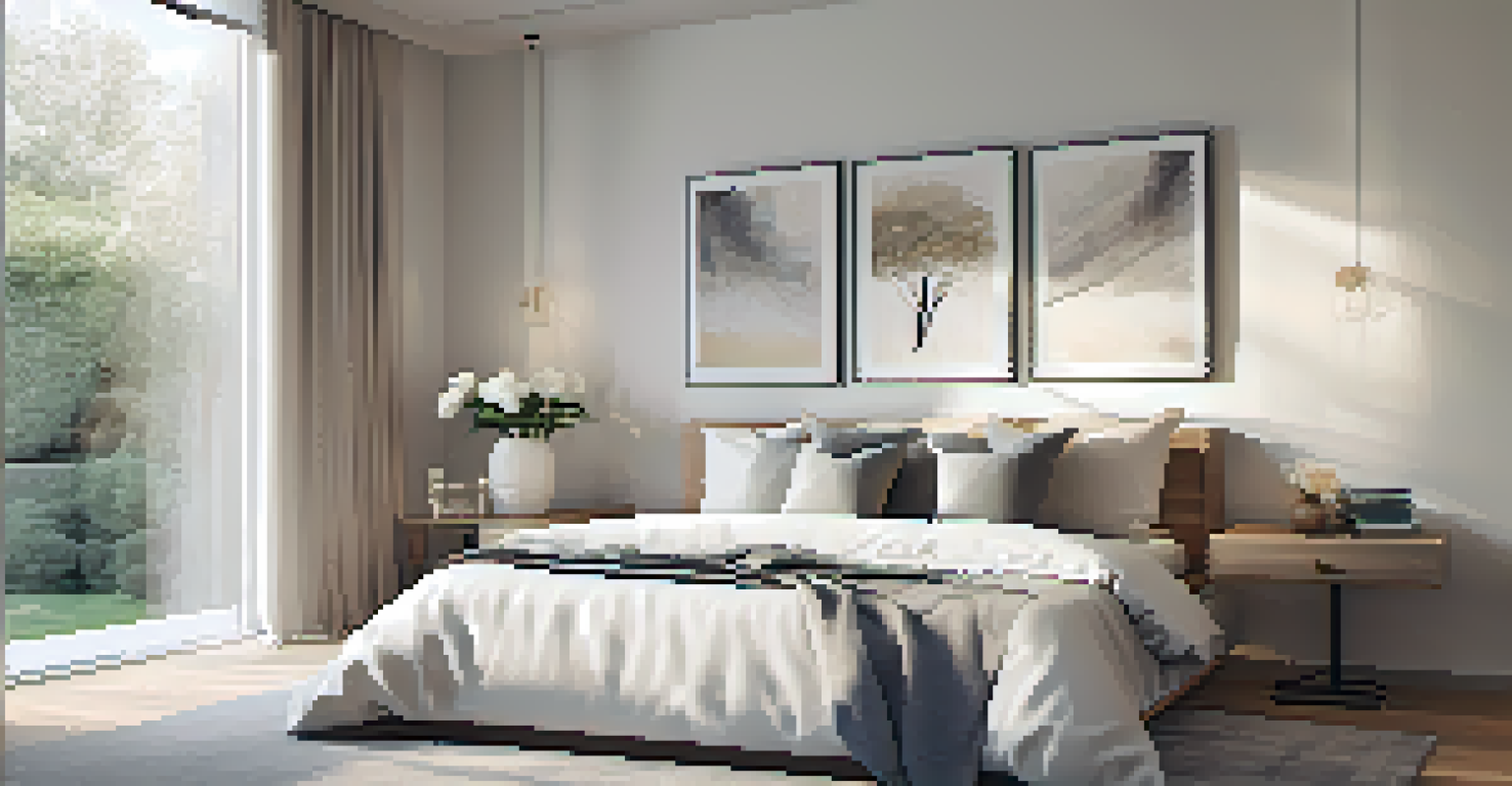The Connection Between Open Concepts and Minimalism

Understanding Open Concepts and Minimalism
Open concepts refer to ideas and designs that promote fluidity and freedom. In architecture, for instance, an open floor plan allows for seamless movement and interaction. Similarly, minimalism emphasizes simplicity, stripping away excess to focus on what truly matters.
Simplicity is the ultimate sophistication.
Both open concepts and minimalism encourage a sense of space, whether physical or mental. They invite individuals to embrace clarity, reducing distractions that clutter the mind and environment. This connection fosters creativity, allowing for innovative thoughts to flourish.
By understanding the essence of these concepts, we can begin to appreciate how they complement each other. The open nature of spaces and ideas aligns perfectly with the minimalist lifestyle, creating an atmosphere of peace and focus. This synergy is what we’ll explore further.
The Role of Space in Open Concepts and Minimalism
Space plays a crucial role in both open concepts and minimalism. In architecture, open spaces can lead to a feeling of expansiveness, promoting relaxation and clarity. When we apply this to our daily lives, it reflects how we can declutter our surroundings to create a more peaceful environment.

In a minimalist home, fewer walls and barriers can enhance the experience of openness. This lack of physical obstruction allows for better flow and interaction among people and ideas. It’s like a breath of fresh air, where every corner invites exploration rather than confinement.
Open Concepts Enhance Creativity
Open environments promote collaboration and innovation, allowing creativity to flourish.
This relationship between space and simplicity encourages us to rethink how we design our homes and lives. By prioritizing open spaces, we can cultivate a minimalist approach, making room for creativity and tranquility. The interplay of these elements is essential for holistic living.
Embracing Simplicity through Open Concepts
Simplicity is at the heart of both open concepts and minimalism. By embracing an open approach, we prioritize essential elements and eliminate the unnecessary. This practice extends beyond physical spaces into our thoughts and decision-making processes.
Less is more.
For example, consider the difference between a cluttered workspace and an organized one. An open concept office can inspire collaboration and productivity, while minimalist principles encourage a focus on fewer tasks that truly matter. This alignment leads to greater efficiency and satisfaction.
Ultimately, embracing simplicity through open concepts allows us to lead more intentional lives. It’s a reminder that less can indeed be more, whether in design or daily choices. By stripping away distractions, we can focus on what brings us joy and fulfillment.
The Psychological Benefits of Open Minimalism
Psychologically, open concepts can significantly impact our mental well-being. A spacious and uncluttered environment can reduce stress and anxiety levels, making us feel more at ease. This aligns closely with the principles of minimalism, which advocates for mental clarity through simplicity.
Research has shown that clutter can overwhelm our senses and lead to cognitive overload. By adopting an open and minimalist approach, we create a soothing atmosphere that promotes relaxation and mindfulness. It’s like giving our minds a much-needed vacation from chaos.
Simplicity Reduces Mental Clutter
Minimalism and open concepts create soothing atmospheres that alleviate stress and promote mindfulness.
These psychological benefits highlight the importance of our environment on our mental state. When we integrate open concepts and minimalism into our lives, we’re not just improving our spaces; we’re nurturing our minds. This connection is a powerful tool for achieving overall well-being.
Open Concepts as a Catalyst for Creativity
Creativity thrives in open environments where ideas can flow freely. Open concepts foster collaboration and innovation by breaking down barriers between individuals and ideas. In contrast, a cluttered or confined space can stifle creativity, leaving us feeling boxed in.
In a minimalist context, creativity becomes even more pronounced. By focusing on fewer elements, we can explore deeper meanings and connections. This simplification allows for a clearer perspective, which is crucial for creative problem-solving.
Thus, the synergy between open concepts and minimalism creates fertile ground for creativity. By removing distractions and embracing openness, we can tap into our creative potential. This dynamic is essential for personal and professional growth in today's fast-paced world.
Applying Open Concepts in Daily Life
Integrating open concepts into our daily lives doesn’t have to be complicated. Start by assessing your environment and identifying areas that feel cluttered or restrictive. Simple changes, like rearranging furniture or decluttering, can create a more open and welcoming atmosphere.
In addition to physical space, consider how you can apply open concepts to your routines. This might mean simplifying your schedule or reducing commitments that drain your energy. By prioritizing what truly matters, you embrace a more minimalist lifestyle that aligns with openness.
Designing for Clarity and Peace
Integrating open and minimalist principles into our spaces fosters a more peaceful and intentional lifestyle.
These small yet impactful changes can transform your daily experience. By fostering openness in your environment and life, you invite clarity and mindfulness. This approach not only enhances your well-being but also encourages a more fulfilling and purposeful existence.
The Future of Open Concepts and Minimalism
As trends continue to evolve, the connection between open concepts and minimalism is likely to grow stronger. More people are recognizing the benefits of simplicity and openness in their lives, leading to a shift in societal values. This change reflects a collective desire for clarity amidst a complex world.
In architecture, we see a rise in designs that prioritize open spaces and minimalist aesthetics. These innovations are not just visually appealing; they also cater to the growing demand for environments that promote well-being and creativity. This is a testament to the enduring appeal of these concepts.

Looking ahead, we can expect to see more integration of open and minimalist principles in various aspects of life. Whether in our homes, workplaces, or communities, the drive for simplicity and openness will shape the way we live and interact. This evolution may well redefine our experiences for the better.